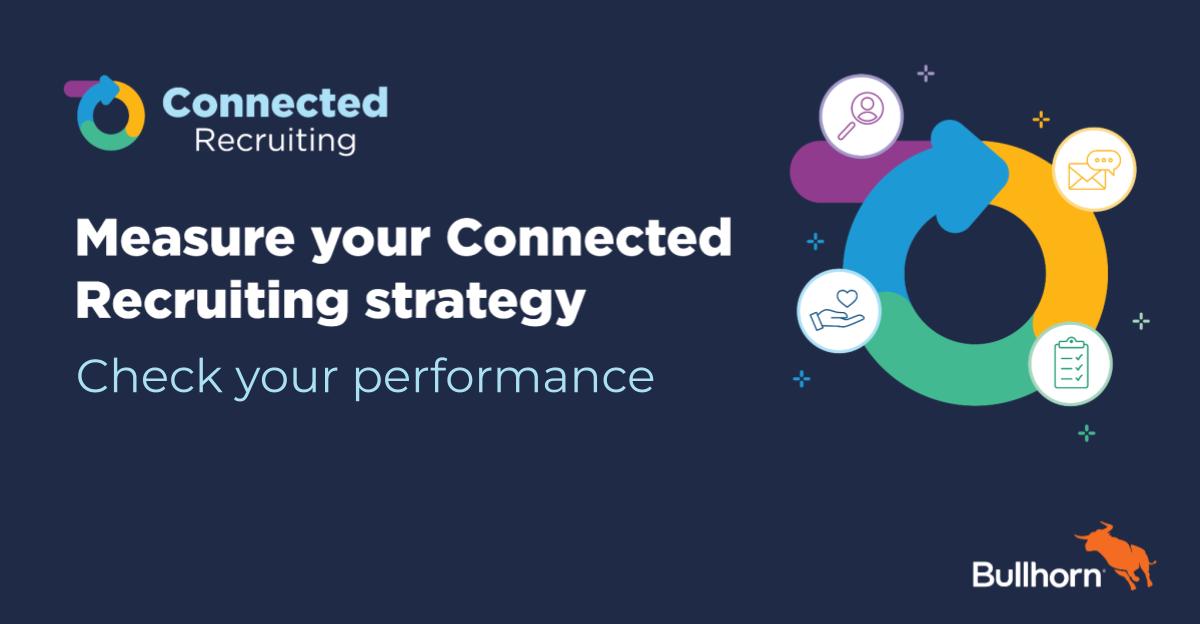Measure your Connected Recruiting strategy: Check your performance

You’ve aligned your team, built a plan, and structured your analysis. In this step of our blog series on measuring your Connected Recruiting strategy, let’s break down what it means to actually measure your strategy. (Spoiler alert: it doesn’t mean basking in the glow of your efforts!)
It’s important to actually remember to perform this step, don’t neglect your scheduled catch-ups, and make sure everyone has made the time required to get in the room and analyze performance against your goals and interrogate the data a bit more.
Firstly, check performance against every primary target across the whole Connected Recruiting workflow and then check the actual trend of performance. Targets not attained may not concern you as much if progress is being made, but that’s not always the case. Speaking of, there are three things you might see of your trends at this point:
Going up
Great news – in this case, it looks like a unified strategy across Connected Recruiting has begun to show improvement in certain areas. You may or may not have already reached your target, but neither is a reason to relax. That said, this won’t be your first priority for now. Make sure that the trend is consistent across your segments, and perhaps do some digging if some units are lagging.
Keep in mind that market conditions can change quickly in recruitment. To validate your findings, you’ll want to consult market trends (or, even better, your control group who are not undergoing the strategy). Disentangle the signal from the noise before calling it a win!
Going nowhere
Your first bit of bad news: if you’re changing how you, your recruiters, or technology conduct business and you’re not seeing any difference, it’s time to investigate. In this case, you may want to speak to recruiters and team leaders to find out why their job isn’t getting easier. It’s also an excellent time to check whether recruiters are taking the actions you expect. Often, a trend doesn’t emerge because the work isn’t even being done. This analysis should be your second priority, however, as things could be worse.
Going down
On some occasions, things may look as though they’re getting worse. This, of course, should be your critical priority, but all might not be as bad as it seems. Let’s start optimistically: very often, when data quality becomes a new focus, the element of correction can easily make trends look worse. Take, for example, a submission-to-interview conversion ratio. Suppose before measuring this ratio, recruiters were less than perfect at logging their submissions. In that case, an increase in data compliance might suggest the trend is going wrong and that they now need more submissions per interview when in fact, many such submissions were simply not making it to the system at all. You’ll first want to check if there’s evidence of improving data quality skewing your trends.
However, recruitment is a delicate ecosystem, and sometimes a tactic can backfire, or another working process could simply be neglected. At this point, it’s time to do some digging into the data, and depending on the metric, it might even be time to reach out to some candidates or clients. If satisfaction is on the decline, who better to tell you why than disappointed candidates? Either way, it’s time to review this tactic and target, and act immediately to rectify a worrying (and hopefully rare) trend.
Regardless of the direction your trends are taking, there are a few ways you can iterate on your strategy to meet the goals you’ve set for your team. We’ll cover that in the next – and final – blog of our series.
Don’t miss the final part of our five-part blog series on measuring your Connected Recruiting strategy: subscribe to the Bullhorn Staffing Blog today.








